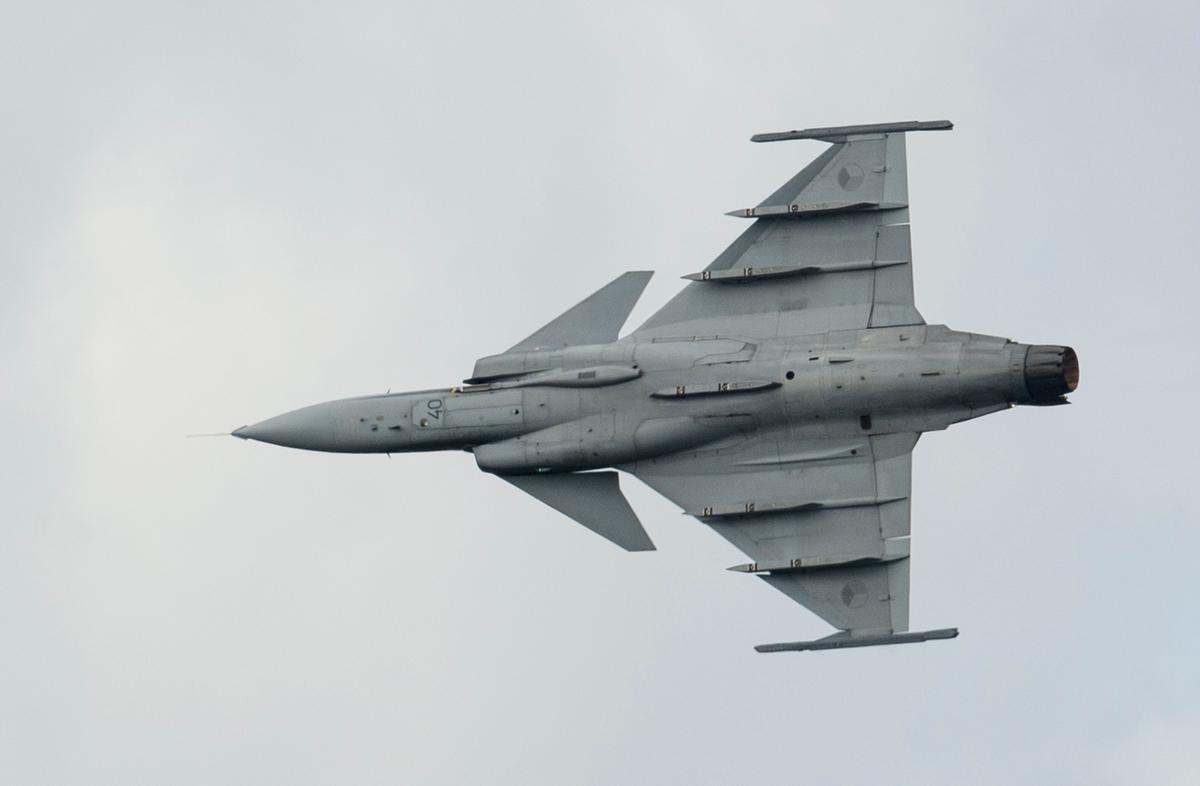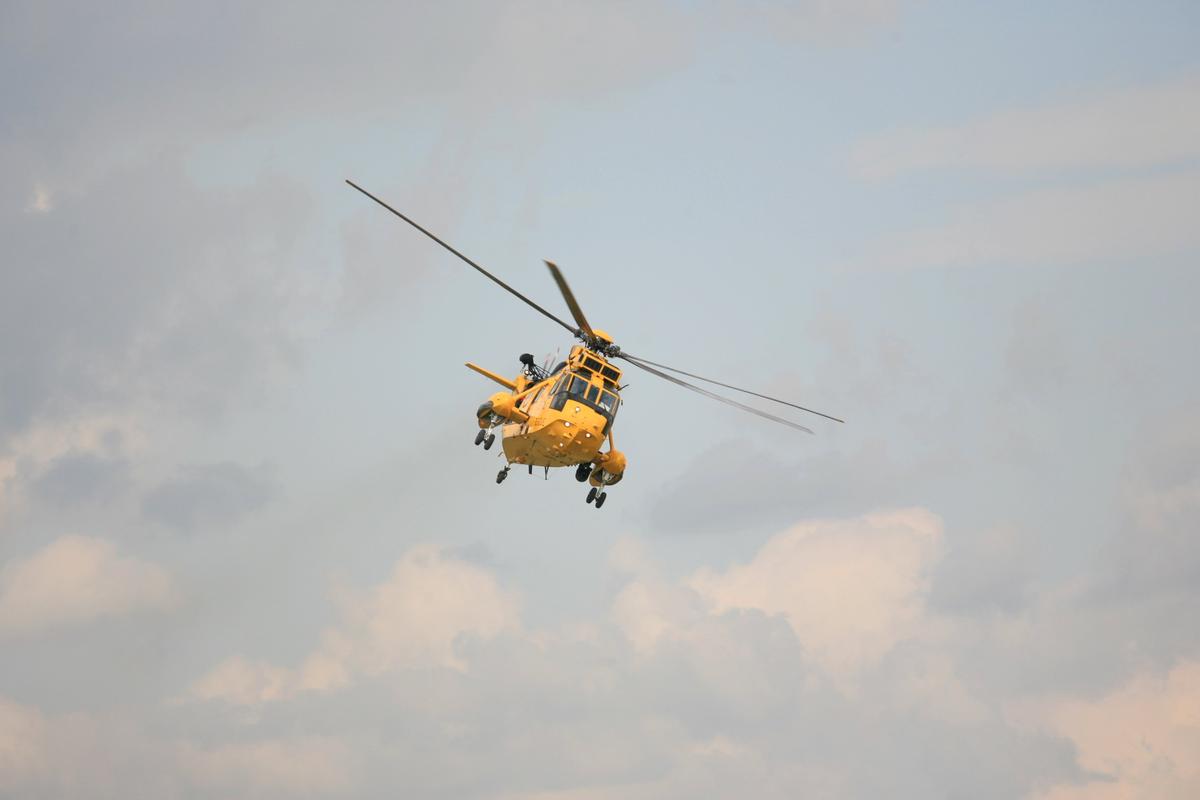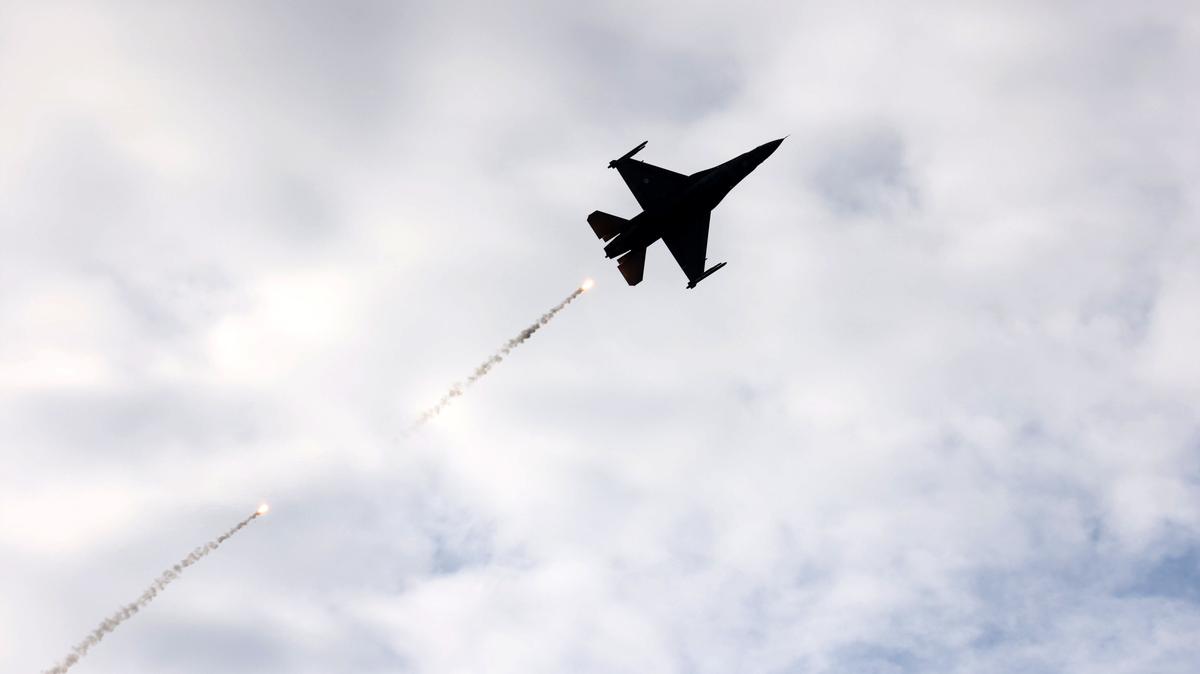US President Joe Biden has announced that Washington will not supply F-16 fighter jets to Ukraine. Meanwhile, French leader Emmanuel Macron does not rule out sending planes to the war-torn country, and the UK, according to The Telegraph, is considering exporting jets to Ukraine but only if Russian troops are withdrawn. Polish Prime Minister Mateusz Morawiecki suggested that Warsaw could also offer Ukraine F-16s if this decision was made in coordination with other NATO allies. The Netherlands is also willing to look into supplying aircraft to Kyiv, said Dutch Prime Minister Mark Rutte. Will Ukraine get the jets, which planes are in question, and can aviation shake up the current balance of power?
Another red line
The decision to send heavy tanks to Ukraine as part of the lend-lease program has sparked debates about another “red line”: possible exports of Western military aircraft to Kyiv. Ukrainian presidential aide Mykhaylo Podolyak mentioned that fast-track negotiations about this topic were ongoing: “I think that we can very soon reach the next level, such as aviation and longer-range missiles.” According to Podolyak, Kyiv needs these weapons to strike the logistical infrastructure and artillery warehouses of Russian forces in Crimea. The official also reported that Ukraine’s “partners understand it all” but cannot “forgo their conservatism of sorts” over fears that the global architecture would change due to the Ukraine war. Ukrainian Air Forces spokesperson Yuriy Ihnat noted that Ukraine needs around 180 fighter jets.
Politico reported citing military officials and diplomats that NATO allies were discussing possible supplies of planes to Kyiv despite fears of escalation. Dutch Foreign Minister Wopke Hoekstra told the national parliament that the government would review any potential request from Kyiv to send F-16s. Dutch Prime Minister Mark Rutte later confirmed this. However, German Chancellor Olaf Scholz earlier rejected calls to supply fighter jets to Ukraine, saying that any further escalation should be averted. But it’s worth mentioning that similar statements were made regarding tanks and HIMARS missile systems which later were successfully delivered to the country.
Charles Brown, US Air Force chief of staff, said that Ukraine could possibly be offered Sweden’s Saab JAS 39 Gripen, one of the cheapest fourth-generation fighter jets, Eurofighter Typhoons or France’s Dassault Rafales. Swedish Defence Minister Pål Jonson, however, told Politico that Stockholm had “no immediate plans to send the Gripen to Ukraine”.

Swedish multirole fighter jet Saab JAS 39 Gripen. Photo: Mark Cuthbert / UK Press / Getty Images
All depends on Joe
“As of now, all talks about possible supplies of planes to Ukraine is essentially counting chickens before they hatch,” Israeli military expert David Sharp told Novaya Gazeta Europe. “But Western countries and the US in particular are slowly overcoming their psychological barriers in supplying different weapons. We can conclude based on the information that emerges in open sources that the supplies of jets are now getting closer.”
“As far as I understand, everything now depends on one person — Joe Biden. It is the US president who can approve exports from the US and greenlight re-exports of jets made in the country for other states that use them.”
“It’s anyone’s game when it comes to predicting decisions that depend on one person. However, it is clear that these supplies are realistic in the future. I can assume that this will happen in the coming weeks or, at the most, months. Apart from US jets, we also hear about possible exports of Sweden’s Gripens, Europe’s Typhoons, and even France’s Rafales. We can even expect that Europeans will follow in the UK’s footsteps after London made an independent decision to send tanks to Ukraine.”
However, David Sharp believes that the very process of delivering planes to Ukraine is a complicated issue in case such supplies are approved. For instance, there are reports that Ukrainian pilots are now being trained to fly Western fighters. Experienced pilots will require months to learn, while rookies starting at zero will take years.
“In the summer, a bill on financing a programme for training Ukrainian pilots amounting to $100 million was put forward in the US Congress,” BBC News Russian correspondent Pavel Aksenov told Novaya-Europe. “In December, it was adopted as part of the Fiscal 2023 National Defence Authorisation Act. Based on this, the programme can be launched this year already.”
“However, this is only the tip of the iceberg. The whole ground personnel need to be trained as well. And there needs to be many more of these specialists. Modern Western jets are high-tech systems that require maintenance specialists to acquire very specific knowledge. Moreover, a proper logistics and repair base to bring in spare parts and munitions should be established in Ukraine. This multifaceted process also requires a long process of selecting and training people as well as the use of various resources.”
“Of course, there can be surprises, but I believe that US F-16s, not the latest models, seem to be the most plausible candidates to be sent to Ukraine,” David Sharp noted. “This is an effective and reliable machine even if it’s not the most sophisticated in configuration. They sometimes mention F-15s and also F-18s that several countries are phasing out now.”
Substantial damage
“It seems like F-16s are the best fit to export to Ukraine,” Pavel Aksenov says. “These planes are very widespread in various modifications. Many countries use them which means that they can fly them to Ukraine with Washington’s permission. And some countries are now switching to more modern models now, therefore, inflating the market of second-hand F-16s.”
David Sharp underlines that a whole range of measures is required to effectively use military aviation: airspace control, detection of targets as well as surface and airborne threats, providing intel to pilots and indicating targets for them. Electronic warfare systems are also vital for jets to protect themselves.
It is not clear what Ukraine needs fighters for, Aksenov says. They can be used to strike surface targets and crack air defence shields, can take part in air battles, and also act as air-defence systems. Moreover, if Western fighter jets are integrated in the Ukrainian forces, they will gain access to NATO intel systems. For instance, US AWACS (Airborne Warning and Control System) in theory could provide information to pilots, greatly simplifying target acquisition and gaining data about the enemy. However, the operational range of these radars is limited, and it’s hard to say how effective they will be for the Ukrainian air forces.
According to David Sharp, if even one or two F-16 fighting squadrons are sent to Ukraine, it will greatly boost Kyiv’s capabilities.
If these jets are fitted with decent weapons, it will allow them to launch strikes outside of the range of Russian air defence systems and fighters.
The latest high-precision weapons make it possible to attack enemies without crossing the frontline. For instance, SDBs (Small Diametre Bombs) dropped from the altitude of 10 km at a significant speed can eliminate opposing forces located more than 100 km away. Just one F-16 can use these bombs to attack several different targets. At the same time, the risk of being downed even by the enemy’s long-range air-defence systems is very low.

F-16 fighter jet. Photo: Horacio Villalobos / Corbis / Corbis / Getty Images
The US jets can also be equipped with long-range air-to-air missiles. This move will create a significant threat for Russian aviation over the territories now controlled by Moscow. Early warning and control aircraft, such as Russia’s A-50, will be under threat in this case. You cannot dominate the skies with these forces. However, it is very possible to find solutions to certain problems by dealing substantial damage to the enemy. Because a single jet, being a super-manoeuvring weapon, can be used on different sections of the frontline on the same day. And if Ukraine receives a significant number of fighters and modern high-precision munitions, it can potentially change the war landscape. The first steps and laying down foundations for future development are crucial here.
Pavel Aksenov believes that Saab’s Gripen is another possible candidate to be sent to Ukraine. Nowadays, this Swedish multi-purpose fourth-generation aircraft is a dark horse. Compared to its counterparts, Gripen has a relatively cheap flight hour. The jet is a good fit for Kyiv in this regard. Moreover, the manufacturer will benefit from sending it to the Ukraine war.
If the aircraft performs well, it will be a great PR campaign for this project which will streamline its promotion internationally.
“High-precision ammunition like AGM-88 HARM anti-radiation missiles or guided bombs using the JDAM technology show better efficiency if they are launched from the planes whose devices are tuned for this munition,” Aksenov adds. “In particular, it is about entering coordinates while in flight. Although, media reports suggest that Ukrainian aviation technicians have found a way to launch HARMs from MiG-29s, it’s hard to say how convenient or effective it is. This is possibly why Kyiv’s Western partners do not categorically reject the idea to supply fighter jets.
Rotor-driven weapon
Media cited UK Defence Secretary Ben Wallace to report that London would supply Sea King helicopters to Kyiv. These machines can be used to fight Russia’s submarines. Ukrainian pilots have already received training to fly them.
This is the first time Kyiv has received Western military aircraft. Previously, only Soviet-made machines were supplied to Ukraine. Published reports note that the sides agreed on three Wetland WS-61 Sea King helicopters. One of them is likely to have already crossed the Ukrainian border.

British version of the US Sikorsky S-61 with the same name produced by Westland Helicopters. Photo: Paul Grogan / PhotoPlus Magazine / Future / Getty Images
“Helicopters today have become more of a niche product,” David Sharp concludes. “In the Cold War era, they were sent to destroy tanks and address a wide range of tasks, but today the rotor-driven machines are used much more selectively due to high vulnerability. The saturation of both armies with MANPADS and other air-defence systems drastically reduces their efficiency on the battlefield. However, British tabloid The Mirror recently published a report, claiming that the UK supplies four modern modifications of Apache helicopters. These machines have the latest weapon systems and can fire high-precision munitions even in the dark. This would tactically improve positions on certain stretches of the frontline. If used correctly, they could work brilliantly on the forefront and cause serious losses in the enemy ranks.
However, there’s an issue of re-training the crews and maintenance staff here. According to David Sharp, it is difficult for the pilots who are used to flying various modifications of Mi helicopters to learn to operate Western machines.
Join us in rebuilding Novaya Gazeta Europe
The Russian government has banned independent media. We were forced to leave our country in order to keep doing our job, telling our readers about what is going on Russia, Ukraine and Europe.
We will continue fighting against warfare and dictatorship. We believe that freedom of speech is the most efficient antidote against tyranny. Support us financially to help us fight for peace and freedom.
By clicking the Support button, you agree to the processing of your personal data.
To cancel a regular donation, please write to [email protected]

